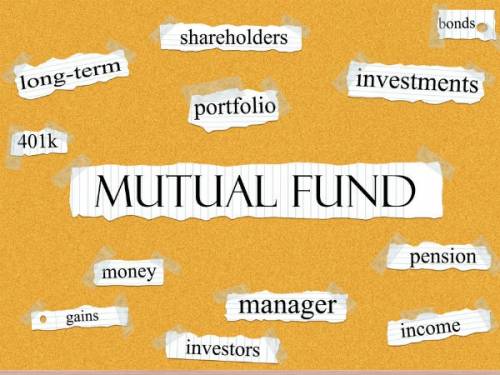8 parameters to analyse mutual funds for beginners
In this blog, we will guide you through 8 simple steps that will help you analyze mutual funds. Regular plans vs Direct plans Before starting a fund analysi
- by B2B Desk 2021-01-21 08:51:41
Although mutual funds are a popular investment tool, people are still reluctant to invest in them. While mutual funds have grown in popularity of late, investors don't know how to analyze mutual funds. Whether you're investing to preserve capital or build wealth, choosing the right mutual fund is essential to achieving your investment objective.
In this blog, we will guide you through 8 simple steps that will help you analyze mutual funds.

Regular plans vs Direct plans
Before starting a fund analysis, we recommend verifying whether the mutual fund is a regular plan fund or a direct plan fund. The standard plan mutual fund pays commissions to brokers or distributors, giving you a lower return on your investment. In fact, over time, as the cost of the investment increases, your returns decrease.
Here’s a real-world comparison between a Direct Plan and a Regular Plan (Mirae Asset Tax Saver Fund):
|
Particulars |
Direct Plan |
Regular Plan |
|
SIP Amounts |
₹5,000 |
₹5,000 |
|
Time |
20 Years |
25 Years |
|
Returns (Since Inception) |
20.45% |
18.69% |
|
Expense Ratio |
0.30% |
1.75% |
|
Amount at Maturity |
₹ 1,66,40,498 |
₹ 1,27,83,529 |
You see, what seems like a small amount in the short term ends up being a huge expense in the long term. If your entire portfolio of mutual funds has regular plans, imagine how much money you are wasting over the years. By choosing simple plans, you save a huge opportunity cost.
Please note that it is important to obtain investment advice from a SEBI registered investment advisor when investing in direct plan funds.
Returns
As investors, the first thing we look at is the returns on our investments. The correct way to do this is to measure returns against the appropriate category average. Every mutual fund has a benchmark against which you can measure its performance. For example, the benchmark for a large mutual fund might be NIFTY 50, NIFTY 100, or Sensex. It is imperative for the box that it always exceeds its standard. Also, always remember to check for ongoing returns rather than just late returns; Subsequent returns may be skewed based on overall performance.
Note: If the fund is significantly outperforming its index and its peers, this could be a red flag, indicating that the fund may not be tracking its targets.

Assets Under Management (AUM)
Managed assets refer to the market value of all investments that a mutual fund holds on behalf of its clients. When you analyze a debt fund, an increase in assets under management is usually a good sign. Indicates that the fund has a better investment flow and that investors enjoy economies of scale. Also, when investors want to withdraw their money, it does not put recovery pressure on the fund due to its larger size.
Recently, Franklin Templeton was forced to terminate 6 of his plans due to enormous recovery pressure from investors.
On the other hand, when you look at a stock mutual fund, especially a small or medium stock mutual fund, relatively smaller assets under management are better; With more assets under management, a fund manager can have a difficult time getting in and out, as small and medium-sized companies don't have the large free floats that larger mutual funds need. However, mutual funds with fewer assets under management should not always be objective because smaller funds can have higher operating costs per unit. A good strategy is to look for funds that have average assets under management; These funds can enjoy economies of scale, without losing investment opportunities.
Expense Ratio
The expense ratio represents the percentage of the total value of the fund's assets that is charged to investors. This amount is charged to cover the expenses incurred by the fund and its professional management. The lower the expense ratio, the higher your true return. As an investor, it is practical to invest in funds that provide good returns with a lower discount to the expense ratio. Compare the fund's expense ratio to the category average (expense ratio).
Tip: If you're investing in a large, actively managed equity fund, switch to an index fund and get higher returns for less expense ratio.

Fund Manager
"Bet on the rider, not the horse." Check to see if the fund manager of the mutual fund you are considering has enough experience and a good track record. Look for the fund manager's years of experience in this field and the performance of the funds he or she managed or co-managed. You want to entrust your money to someone who has a good understanding of the market and can help you get a better return on your investment.
Quantitative measurements
Quantitative measures give you a succinct idea of the risk to the fund and the volatility you can expect in your returns.
-
Standard deviation: it is a measure of the volatility of returns. A higher standard deviation indicates higher volatility, making it difficult to predict returns. When you compare two funds of the same class, the one with the less standard deviation will provide more consistent returns. It is important to note that stock funds have a higher standard deviation than debt funds because the stock market is more volatile; They should not be compared to each other. Two mutual funds can be compared with the same benchmark, as these funds will have the same inherent risks and assets.
-
Beta: Beta denotes the fund's sensitivity to market movements. For example, Beta 1 indicates that the fund's performance will reflect the market's performance. Beta below 1 indicates less volatility than the market. For example, beta 0.8 means that if the market falls 100 pips, the fund's returns can only decline by 80 pips. Therefore, the trial version should be less than or close to 1. You should only choose higher trial funds if you have a high appetite for risk.
-
Risk-adjusted return (Sharpe ratio and Trainor ratio): It is important that investors consider the risks that the funds have taken to generate returns. If Fund A has historically taken large amounts of risk to generate the returns that Fund B has been able to achieve at a lower level of risk, then the investor should choose Fund B. A higher Sharpe or Trainor ratio indicates that a The fund has taken a price with a lower risk level to generate higher returns, which is a good sign. You can also compare the fund's performance to the class average.
-
Alpha: Alpha is the additional return that the fund can generate compared to its index. Higher alpha is desirable.
- Portfolio Turnover Ratio: Shows how often the fund manager buys / sells securities. Every time a fund manager buys / sells securities, transaction costs are applied and their investment cost increases. Low portfolio turnover is preferred; It also indicates that fund managers have confidence in the actions they choose.
Wallet
The next step is to take a look at the fund's portfolio, the securities the fund has invested in, and the sectors to which it is most exposed. If you are investing in debt in order to preserve capital, you should see if the securities in which the fund has invested have a good credit rating (AAA). If you are investing in a mutual fund, the securities listed in the portfolio must be consistent with the investment objective of the fund.
Objective
Before investing, it is essential that you decide on your investment objective, your investment horizon and your willingness to take risks. This requires you to ask yourself three questions: 1) Why should you invest? B) When will I need my money back? C) What is the appetite for risk? Once you have these answers, you need to ensure that your objective, investment horizon and risk appetite align with the fund's objectives. To check the risk profile of the fund, you can refer to the fund's "risk indicator". For example, if you want to invest longer and have a high appetite for risk, it makes sense to invest in mid- or small-cap funds.
This article gave you a brief idea of how to analyze a mutual fund. However, it can be difficult for the best minds to choose from so many funds and rate them individually. This is where it can be extremely beneficial to obtain investment advice from a SEBI registered investment advisor. A good investment advisor can help you assess your risk profile and recommend investment products that suit your needs and profile. The Tarrakki app offers expert investment advice, making investing in fee-free mutual funds easy, fun, and convenient.
Also Read: 7 home loan strategies for first-time borrowers
POPULAR POSTS
Best Silver Investment Platforms for 2025: From CFDs to Digital Vaults Explained
by Shan, 2025-10-23 12:22:46
Best Investment Plans in India for 2025: A Complete Guide to Grow and Protect Your Wealth
by Shan, 2025-09-18 10:20:46
Which venture capital firms are the most active in funding Indian startups in 2025
by Shan, 2025-08-06 10:42:11
Top 5 Apps to Buy Digital Gold in India (2025): Safe, Simple & Secure
by Shan, 2025-08-01 10:24:51
10 Highest Dividend Yield Stocks in August 2025
by Shan, 2025-07-28 09:31:02
Exchange-Traded Fund (ETF): A Practical Guide to Smart Investing
by Anmol Chitransh, 2025-04-17 10:18:20
The Ultimate Guide to Commodity Trading: Strategies, Risks, and Opportunities
by Anmol Chitransh, 2025-04-02 07:06:01
RECENTLY PUBLISHED

Loan EMIs to Drop as RBI Slashes Repo Rate - Full MPC December 2025 Highlights
- by Shan, 2025-12-05 11:49:44

The Agentic Revolution: Why Salesforce Is Betting Its Future on AI Agents
- by Shan, 2025-11-05 10:29:23

Pine Labs IPO 2025: Listing Date, Grey Market Premium, and Expert Outlook
- by Shan, 2025-11-05 09:57:07

Top 10 Insurance Companies in India 2026: Life, Health, and General Insurance Leaders Explained
- by Shan, 2025-10-30 10:06:42

OpenAI Offers ChatGPT Go Free in India: What’s Behind This Big AI Giveaway?
- by Shan, 2025-10-28 12:19:11





 Subscribe now
Subscribe now 